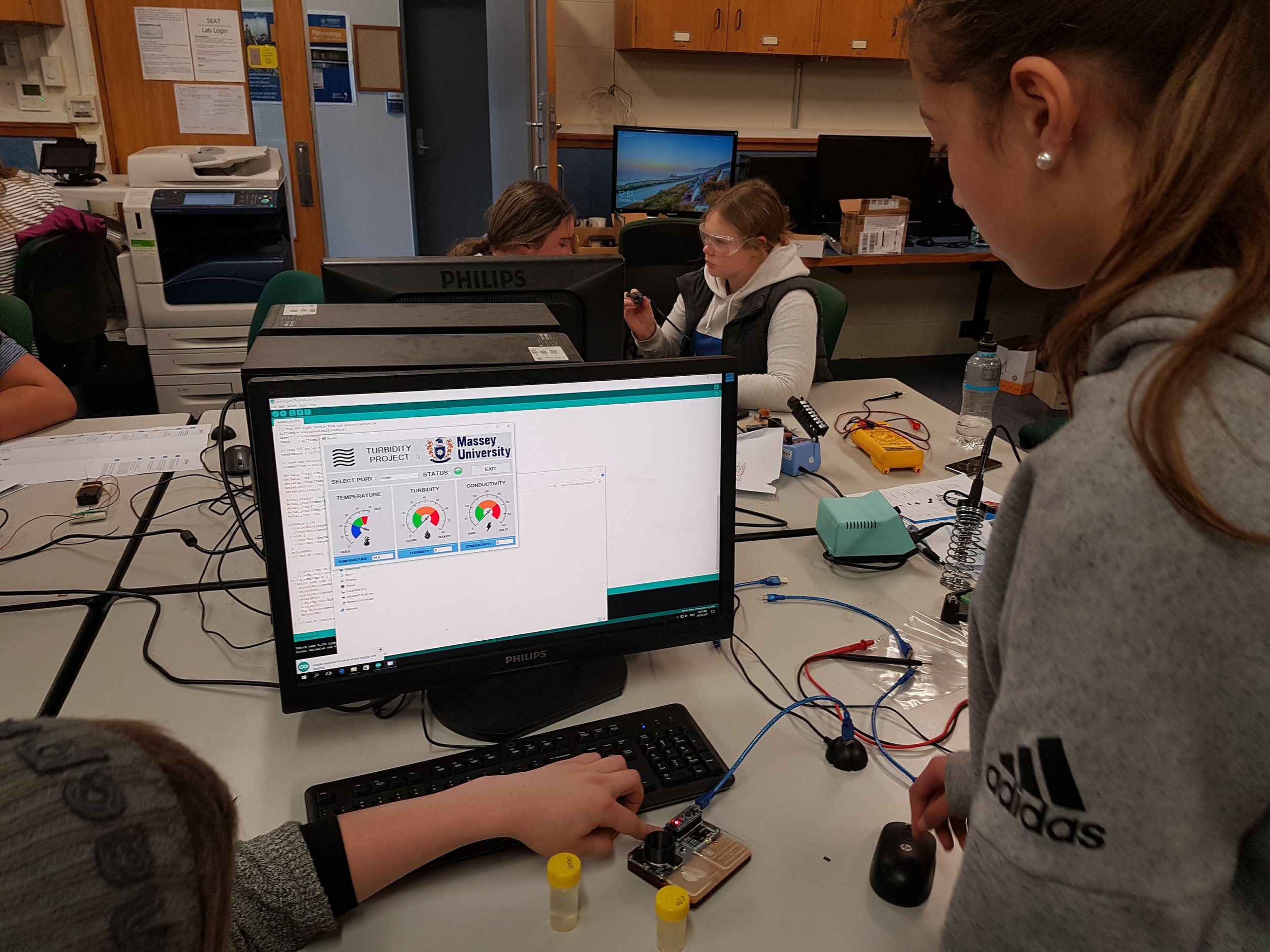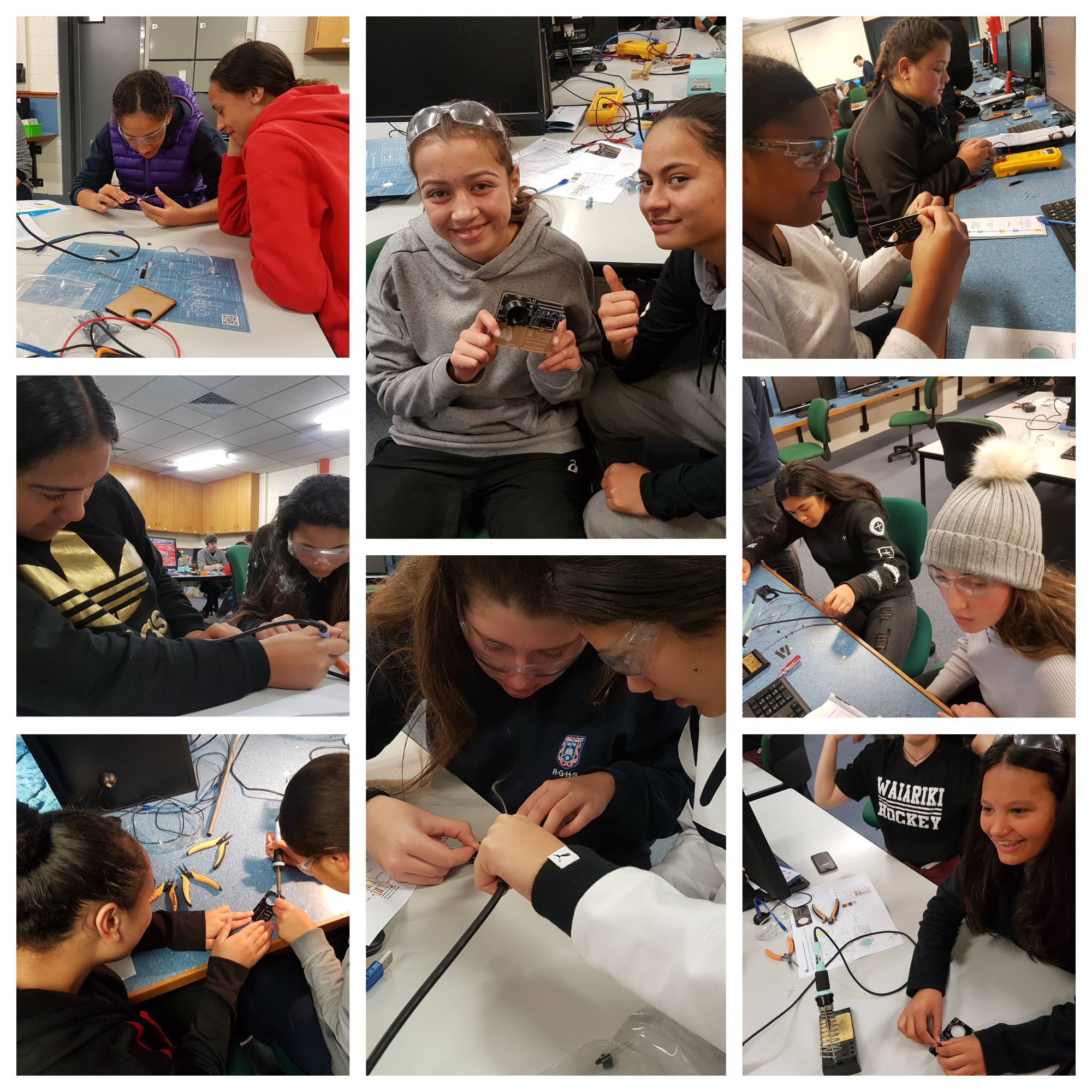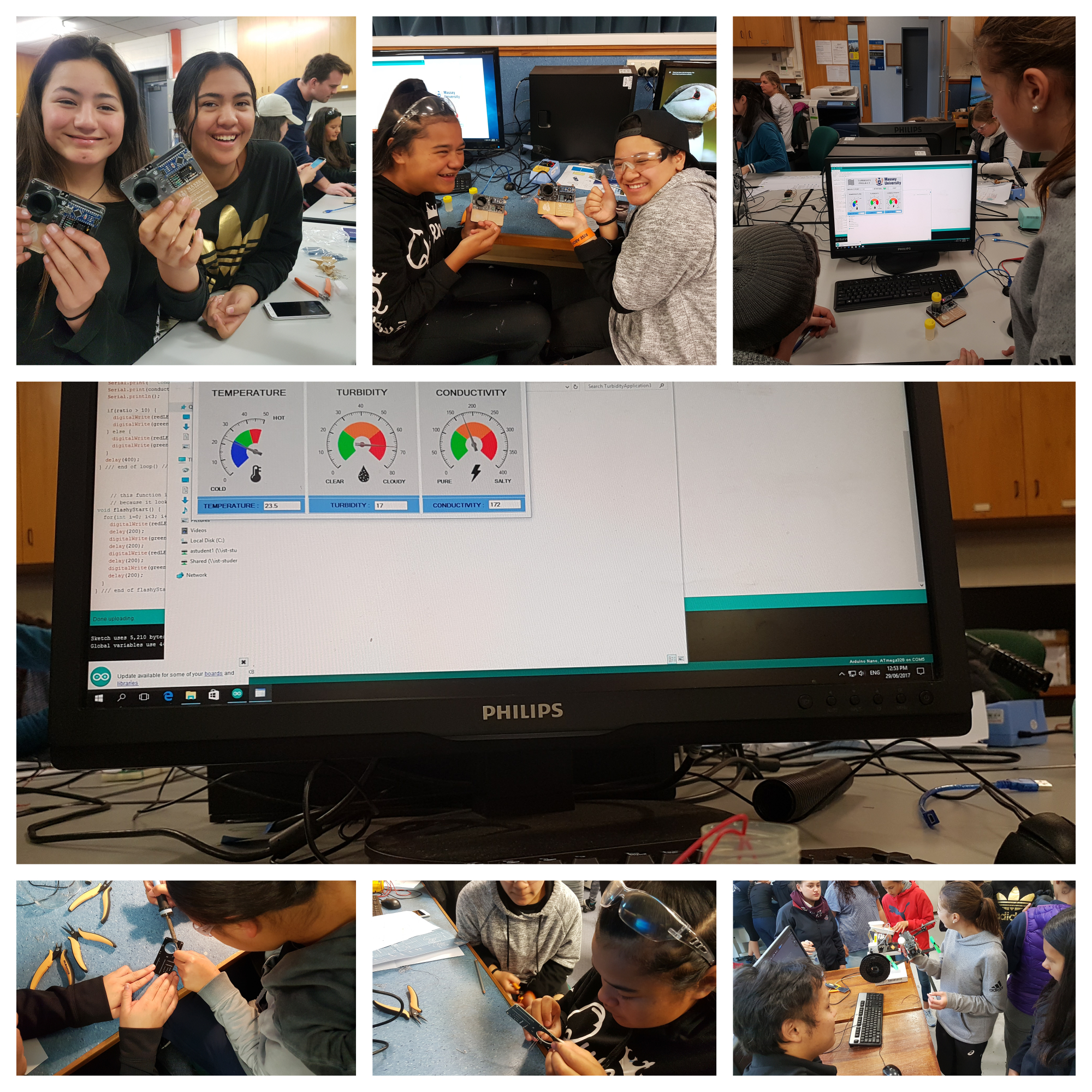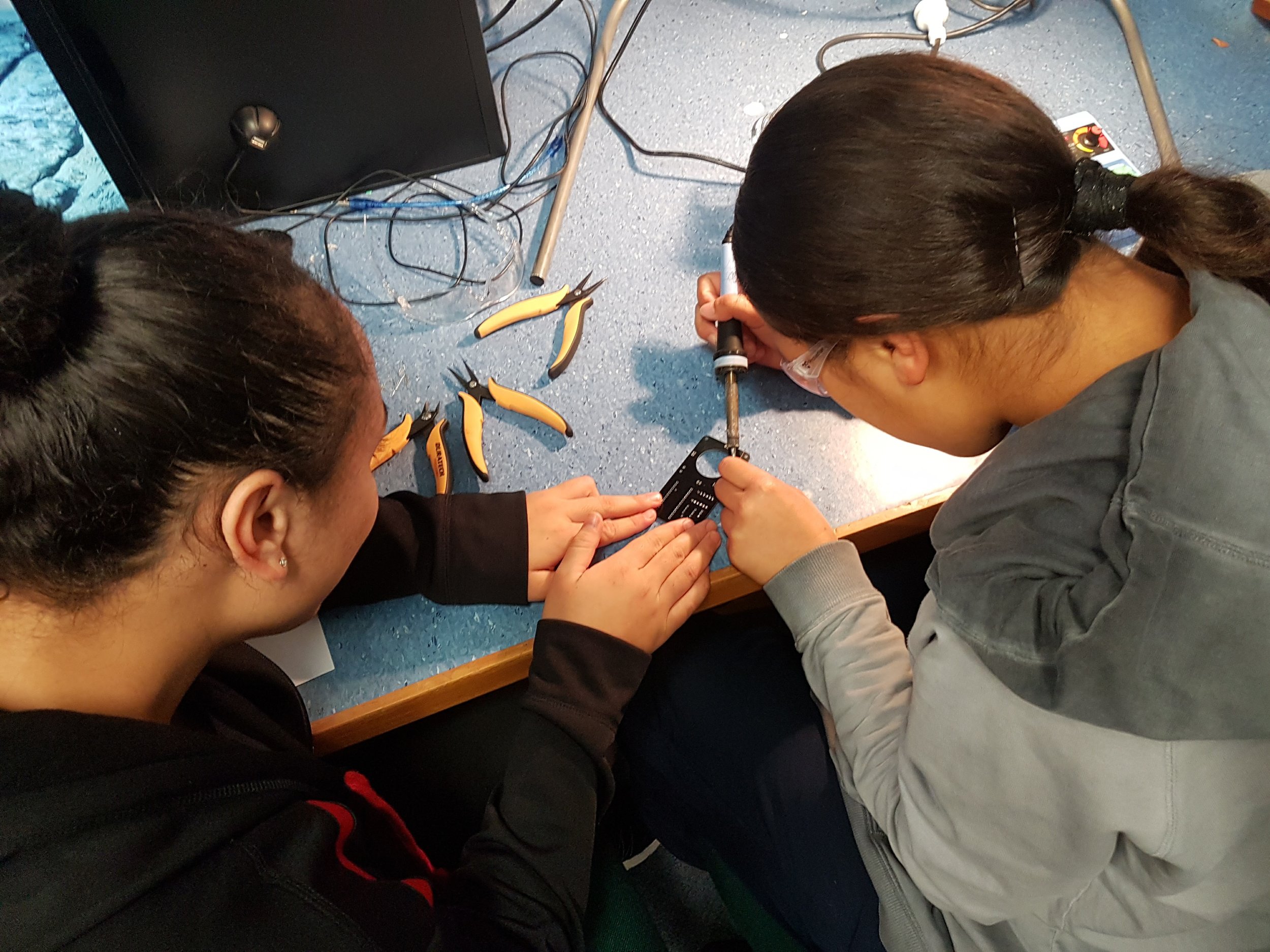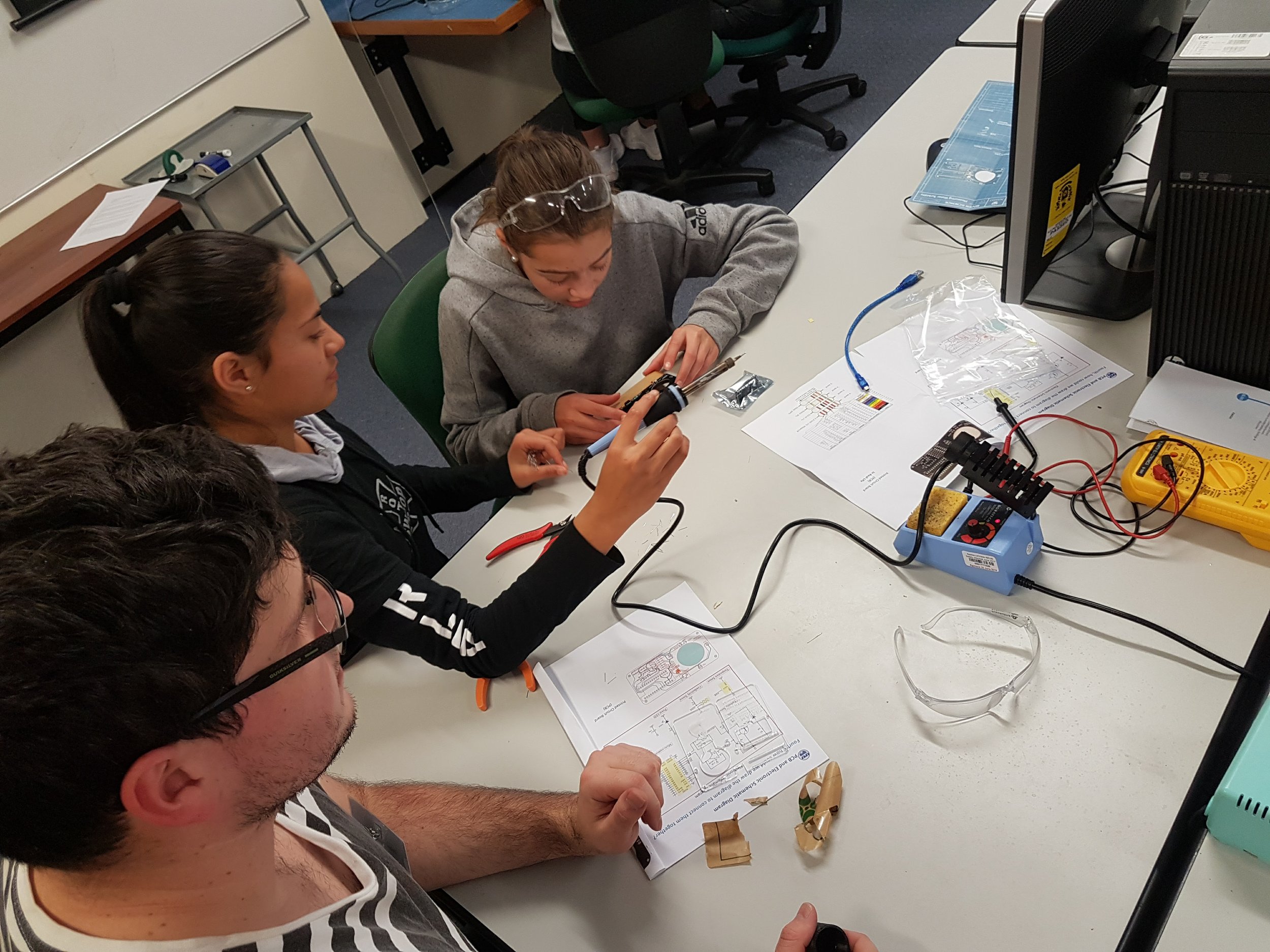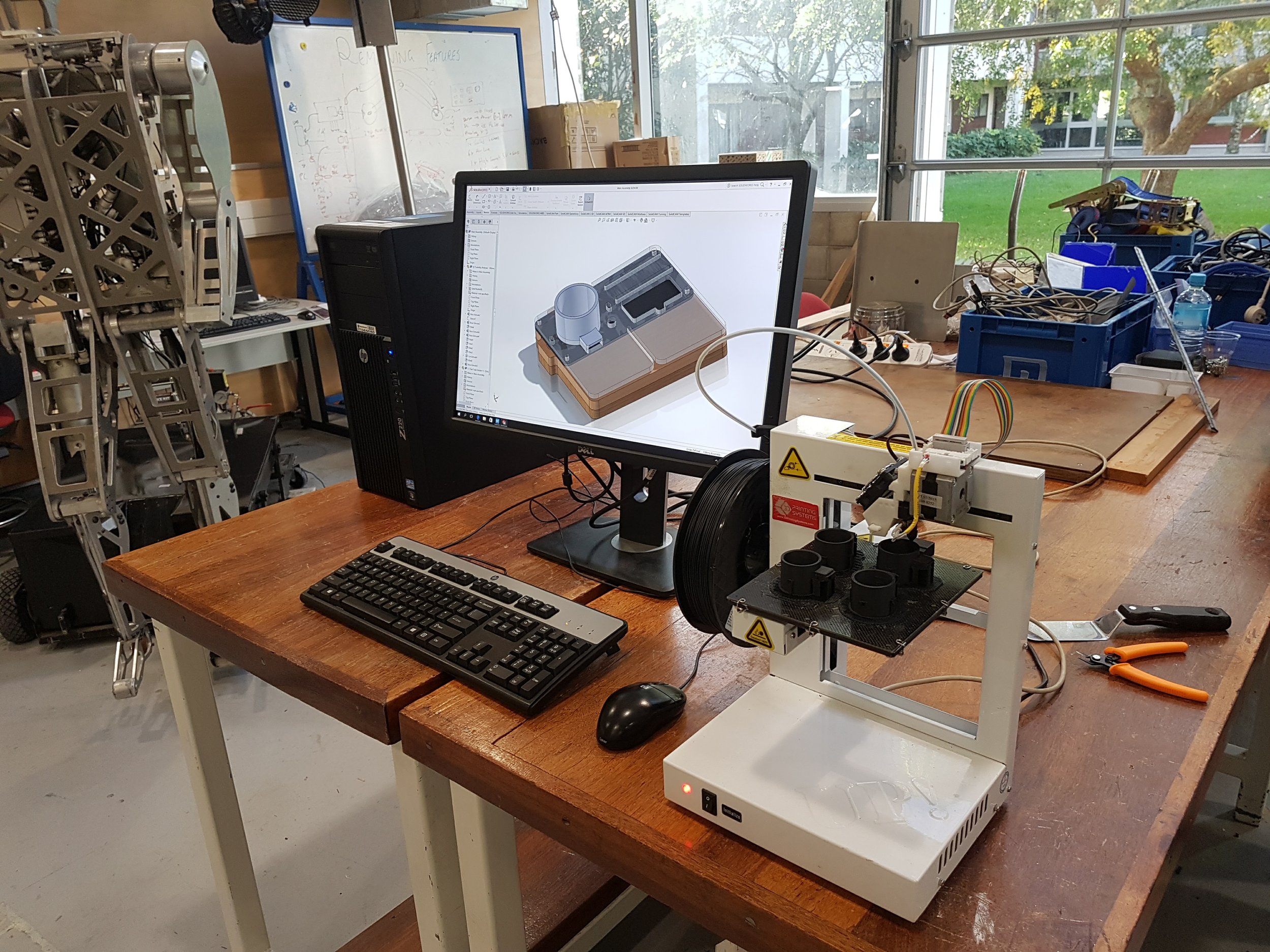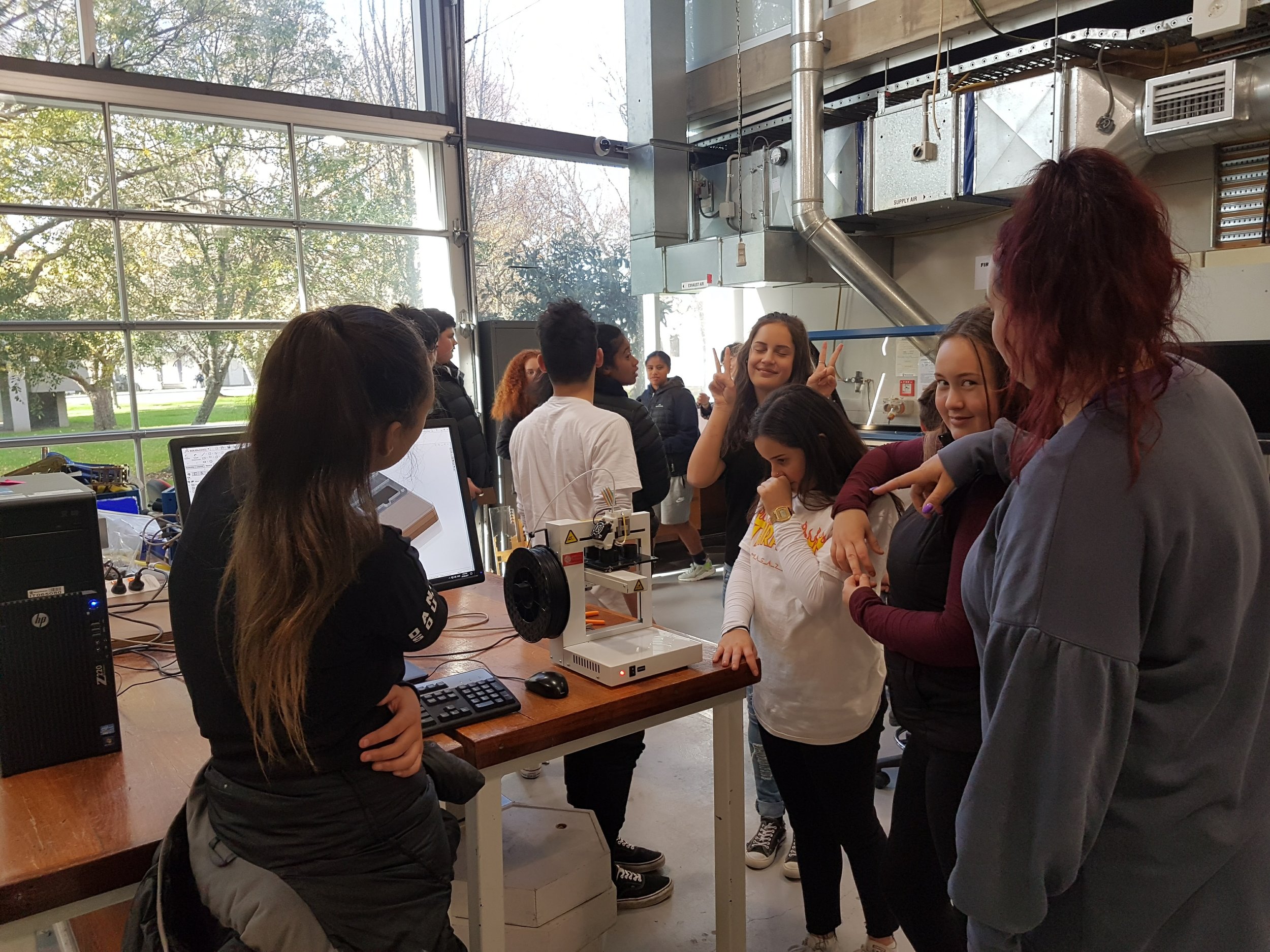Turbitidy Sensor Upskilling- Rotorua students @ Massey University
Rotorua students jumped into action as they worked with Massey graduates to build their turbidity sensor. Within New Zealand a number of studies have attempted to address the effects of sublethal turbidity levels on native fish so as to identify the levels affecting them (Boubee et al. 1997; Rowe and Dean 1998; Rowe et al. 2000; Richardson et al. 2001; Rowe et al. 2002). NIWA has also engaged in studies to determine the lethal turbidity levels that affect the common native fish in Auckland streams. Their research has established turbidity limits to protect fish in New Zealand rivers for peak-flow conditions (i.e. floods) when extreme turbidities may kill fish, and for base-flow conditions when long-term exposure to sublethal turbidities may affect fish behaviour and reduce their populations.
Suspended solids produce two main ecological effects in streams that can affect fish and invertebrate communities; (a) increased turbidity of the stream water, and (b) increased siltation of stream beds. Knowledge of the main effects of suspended solids on the biota is needed to manage sediment concentrations in streams. Building the curiousity and capacity of our youth in engineering skills is a pivotal pathway to developing a more technologically competent NZ.
Tours of the Engineering department were organized so that students could interface with Engineering Innovation, Electronics projects, Laser cutting and 3 d printing technologies as well as observe Food Technology& innovation. At the end of the day students could appreciate how everyday tools and equipments utilized (buses, traffic signals, parking meters, tablets, phones etc) rely on electronics and computer systems.
The joy of working hard for a day but then seeing their device “work” at the end was tremendous for rangatahi take their first steps toward becoming future thinkers, developers and innovators of the 21st century and beyond.

